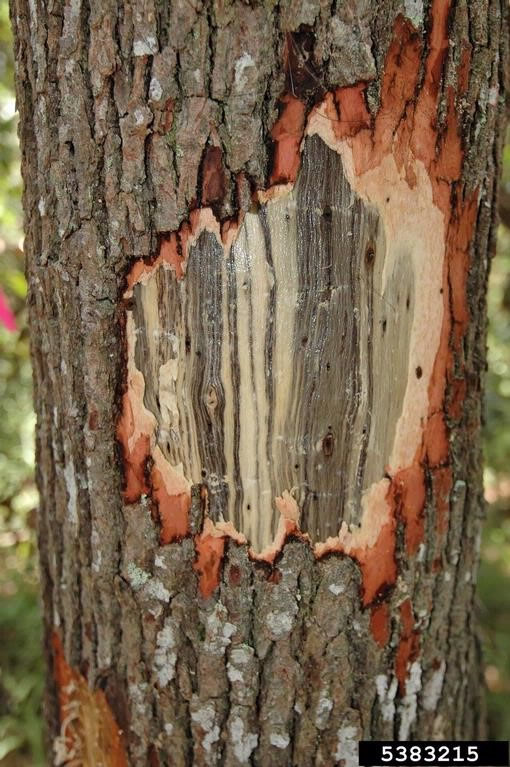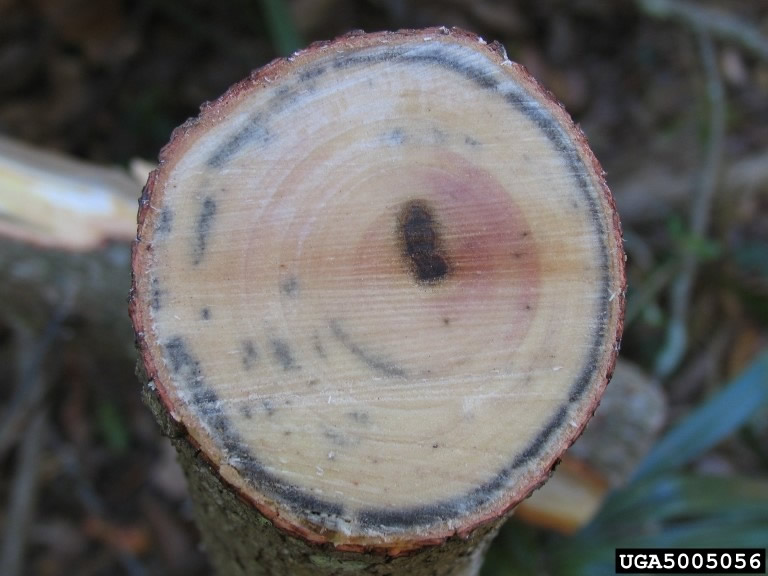Issue 10, September 11, 2020
Laurel Wilt
Laurel wilt is a disease caused by the fungal pathogen (Raffaelea lauricola) that is vectored by the redbay ambrosia beetle (Xyleborus glabratus). This exotic disease was first detected near Port Wentworth, Georgia in the early 2000s. Since then, it has killed millions of redbay and swampbay trees as well as caused extensive damage to agricultural avocado groves. To date, Laurel wilt has not been detected in Illinois. However, laurel wilt has been detected in Kentucky, and has it the potential to infect two plant species utilized in our landscapes. You can view a laurel wilt distribution map via the following link: https://www.fs.usda.gov/Internet/FSE_DOCUMENTS/fseprd669956.pdf
As the name suggests, laurel wilt is a disease of trees and shrubs within the Lauracea family. Potential hosts in Illinois include sassafras (Sassafras albidum) and spicebush (Lindera benzoin). Both are susceptible to the fungus. However, the relatively small stems of spicebush may not be as attractive to the ambrosia beetle that vectors the fungus.
The fungus enters the tree as the female redbay ambrosia beetle bores into the host tree. Once in the tree, the fungus infects the xylem and restricts the tree’s vascular system. Leaves initially wilt, turn a reddish-brown color, and then drop from the tree, leaving bare branches. The disease progresses rapidly, often killing the tree within weeks of being infected. Infected trees have a characteristic dark streaking of the sapwood.

Redbay tree with dark streaking of the sapwood caused by laurel wilt. Photo Credit: Ronald F. Billings, Texas A&M Forest Service, Bugwood.org

Redbay tree with vascular discoloration caused by laurel wilt. Photo Credit Albert (Bud) Mayfield, USDA Forest Service, Bugwood.org
Our current goal is to avoid introducing this disease to Illinois. Redbay ambrosia beetles can spread naturally through flight, but they can also be moved to new locations via infested wood. Do not transport dead laurel species, including firewood or other untreated wood products, to areas where the disease has not been detected.
Early detection will be essential for managing any new introductions to the state. If you see sassafras trees with symptoms matching those described above, please alert the University of Illinois Plant Clinic
Additional Resources:
USDA Forest Service Pest Alert: Laurel Wilt https://www.fs.usda.gov/Internet/FSE_DOCUMENTS/fseprd673152.pdf
How Cold Is Too Cold for Redbay Ambrosia Beetles? https://www.srs.fs.usda.gov/compass/2018/01/18/how-cold-is-too-cold-for-redbay-ambrosia-beetles/
Author:
Travis Cleveland